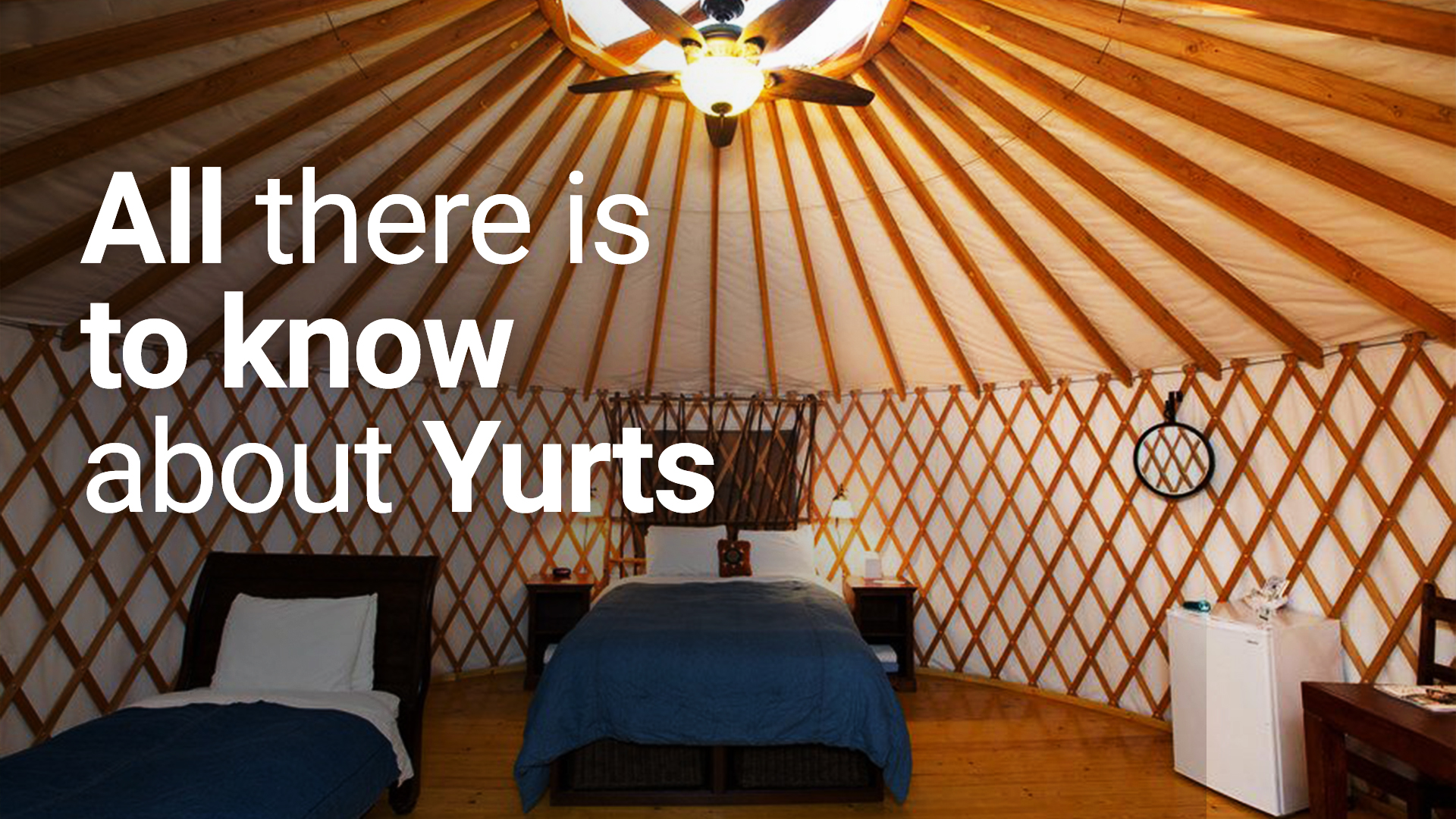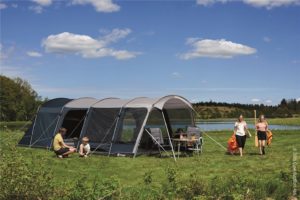

Amy
- Categories: Camping
Introduction To Yurts
Being amongst nature is a good way to take a breather from all the hustle of the busy city life. Some common forms of accommodation include cabins, tents and RVs but there is one that is also rising in popularity in recent years – yurts. Just imagine a cross between a cabin and a camping tent, that is also able to withstand hard weather conditions.
Thinking of going for a yurt on your next camping trip? Let us take a look at their suitability and when it is best to use them.
What is a Yurt?
Used by Central Asian nomadic tribes back in the day, yurts were a one-room kind of mobile home built with a cylindrical structure which could accommodate quite a few people. On the inside, the supporting structure is made up by crossing pieces of wood to form a lattice wall and a crown, which stays partly open for air circulation. In a more traditional yurt, there would also be common household furniture such as beds, tables and a wood or coal-burning trove for cooking and heating. Yurts that are for shorter-term stays are often also set up in a similar fashion but with the heating moved off to the side for aesthetical and heating purposes.
Comparing Yurts
Yurts and tents are similar in various aspects such as its portability, design and materials used. However, the main difference between a yurt and a tent is that the former is often sturdier than that of a tent. Yurts are supported by lattice walls that are further strengthened by a compression ring in the roof’s center. On the other hand, tents are supported by the tension between the poles and latched onto the ground using stakes. Yurts also come equipped with door frames and windows whereas a tent’s window or door structure are the zips that open and close the tent itself.
Yurts also differ from houses or cabins in the way they are built. Yurts are generally rounder in shape, covered in cloth and fabric on the exterior. More traditional yurts only have one large room and one level. This feature is often a selling point for those who want to live in a “special” home or to live minimally. Yurts are also relatively more environmentally friendly than that of RVs and campers.
Modern Vs Traditional
Traditionally, yurts were used as homes for the nomadic tribes in Mongolia in areas where there are no trees. Such areas often have large variations in temperatures and face harsh winds during the spring season. Thus, yurts were designed to be built aerodynamically to withstand such weather conditions. The outside was then covered in layers of felt made out of the outer coverings of sheep and yaks so as to insulate the inside from the extreme winter weather. Yurts were also designed to be easily transportable, as these nomadic tribes move and relocate multiple times in a year. These traditional yurts are still widely used in Mongolia today and have become a large part of the Central Asian cultural identity.
While yurts stem traditionally from Central Asia for a few thousand years prior, it has been gaining traction in the glamping world to be one of the more popular accommodation options. Let us now take a look at how such traditional housing has become modernized, especially in Western cultures.
Currently, modern yurts are more commonly used in North American camping sites as well as ski resorts. In general, the basic structure and its design has remained unchanged but others have changed to keep up with the times. One main key difference is that modern yurts are not designed to be mobile or transportable. Hence, many of them are instead permanently built on wooden platforms and the internal frames are made out of a sturdier metal material instead of the usual wooden ones. On the outside, they are also covered in high-tech fabric instead, as compared to the felt used on traditional yurts. In the United States of America, many of these yurts come equipped and pre-installed with electricity, heating and plumbing and many amenities are fitted to meet the needs of the current population. Such amenities include things like a skylight as well as windows. Modern yurts in the US are also more commonly used as a form of accommodation during camping or glamping trips, as well as during vacations or retreats, where many tourists also opt for such a lodging option.
In recent years they have become part of the Glamping scene in the UK. With more and more sites now offering you the ability to hire them for the weekend. Check out Glamping sites in the UK to find a site nearby.
Can I Buy A Yurt?
Just like any other property, yurts can be both bought or rented. Unfortunately, since living in yurts as a permanent residence are relatively less popular, the choices might be more limited and this is especially so if the location you choose is more urban. It is best to contact a real estate agent who has the knowledge in such an accommodation or at least is familiar with the area. Alternatively, you can build yourself one by buying a kit or hiring someone to do it for you.
If you are looking for a more portable option, such yurts can be purchased both online and in stores, but the way they are built might differ in terms of their layout. Always check out the reviews beforehand at the campsites or Airbnb before deciding on a yurt of your choice before you embark on your weekend adventure or invest in one as your accommodation of choice.
Conclusion
Apart from being a suitable camping lodging option, yurts are also suitable for your own personal use. Yurts might be attractive to individuals or families who are looking for a smaller sized home as it still provides ample space given the small area it occupies. Additionally, yurts can also serve as a good “second” home such as a studio or guest home, which compliments your current property perfectly. Regardless of what you do intend to use a yurt for, they do give room for you to unleash your creativity and customize its interior design according to your preferences.
Share:
By submitting your email address, you are agreeing to receive marketing emails from theexpertcamper.co.uk.
We’ll never share your email address and you can unsubscribe at any time. Privacy policy
Related Posts

A Seasonal Guide To Hiking In The Peak District
Are you ready to lace up your hiking boots and explore the stunning landscapes of the Peak District? This seasonal guide will take you through

Hiking Challenges Preparing For Your First Ultrahike
Are you ready to take your hiking adventures to the next level? Ultra-hiking offers a unique combination of physical and mental challenges, breathtaking scenery, and

Ecofriendly Hiking Tips For Sustainable Adventures
Are you an outdoor enthusiast looking to minimise your impact on the environment while enjoying the great outdoors? Eco-friendly hiking is the perfect solution! We

The Best Hiking Trails For Experiencing UK Wildlife
When exploring the picturesque hiking trails of the UK, you can expect to encounter a diverse array of wildlife. From majestic birds soaring overhead to

Wildflower Walks The Best Trails For Nature Lovers
Are you a nature lover looking to embark on a wildflower walk? Explore the best trails for wildflower walks, including [Trail Name 1], [Trail Name























